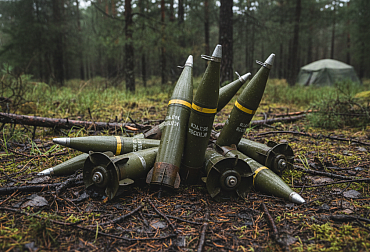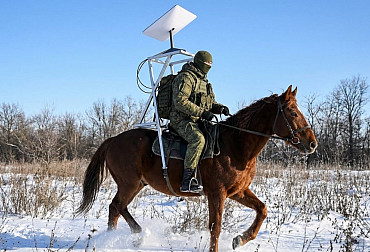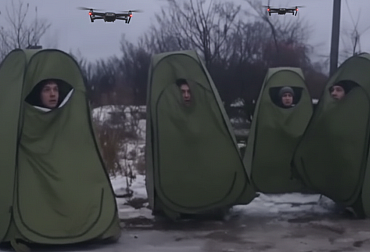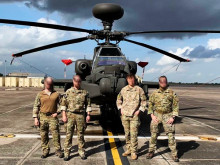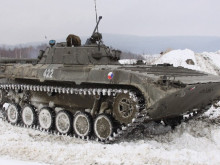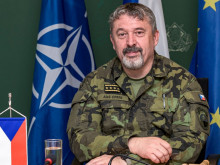Fighting for the enemy's will and the support of its own population: the Cyber Forces and Information Operations Group in Olomouc
Information and cyber forces are capable of operating in the full spectrum of operations, and are designed primarily to conduct information and psychological operations, civil-military cooperation, and combat in cyberspace. Let's take a closer look at this type of force under the Czech Army.
It is the youngest type of the Czech Army. The Information and Cyber Forces were established only on 1 July 2019, with the first unit taking over the command on 1 January 2020. It was the 103rd CIMIC/PsyOps Centre, transformed into the Cyber Forces and Information Operations Group. Exactly one year later, a second unit was added, the Computer Incident Response Capability (CIRC) Centre. In this form, the force exists, with minor changes, to this day.
However, as recently described in the Concept for the Construction of the Army of the Czech Republic, this will not be the case forever. Due to the dynamic development in this area and the rapid numerical development of the force, it was decided to transform the subordinate units of the Information and Cyber Command into two groups, i.e. regimental-type units, namely the Information Warfare Group and the Cyber Warfare Group. As the names themselves suggest, there will be greater specialisation within each unit along the lines of either information operations or cyber warfare. With less than six months to go before the transformation, there is room to reflect on the current capabilities of the Cyber and Information Operations Group, which today integrates most of the capabilities from both lines. What better way to do this than against the backdrop of the most serious security threat to the Czech Republic in its existence - the Russian-Ukrainian war.
Capabilities of the Cyber Forces and Information Operations Group
The operational capabilities of the group could certainly be described by analyzing the individual components of the unit, but since the tasks of the individual centers overlap for good reason, it is better to mention the capabilities of the unit as a whole and then the individual specializations.
The unit provides continuous support to the strategic level in the field of strategic communication, and it carries out these activities mainly for the benefit of the General Staff of the Army of the Czech Republic. In wartime, the group would then provide direct support, especially in the conduct of information and psychological operations, but also in civil-military cooperation, to all three manoeuvre elements of the ground forces. Last but not least, the group is a permanent part of the state's intelligence system, which it supports in particular with open source and social media intelligence capabilities. What do all of these concepts mean and how are they being applied in the current theater of war?
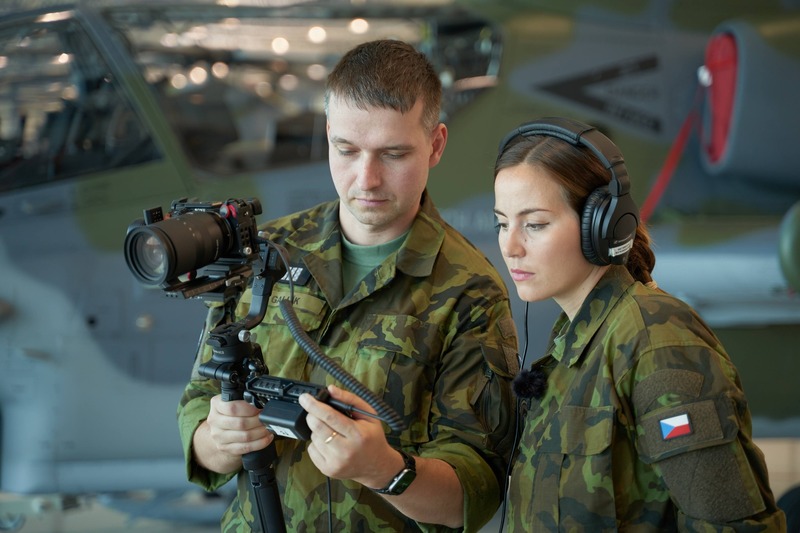
Information and psychological operations
Although they have been part of modern warfare since at least World War II, they have long been a Cinderella in the Czech Army. Simply put, we can say that information operations carried out in peacetime conditions are close to what is called an information campaign in civilian conditions in the commercial sphere. Its aim is to use information to bring about a change in the perception of a given issue and, consequently, a change in the behaviour of the target group. As a rule, they are aimed at a range of target groups, including the own population and the armed forces. Psychological operations, by contrast, are conducted against the enemy in a broader sense and are thus reserved for non-peace situations.
An example of a successful information operation is the Ukrainian army's communication in English in a social networking environment in order to win over and subsequently maintain Western public opinion. Had it not been for these efforts, it is hard to expect that, particularly in some NATO countries, there would have been a complete reconsideration of the supply of arms to a struggling Ukraine, with public opinion shaping the actions of the political sphere, not the other way around.
Historically, psychological operations have been primarily focused on the enemy's will to continue fighting, and the situation on the Ukrainian battlefield is no exception. Ukrainian psychological operations targeting fighting Russian soldiers, using Russian social media to demonstrate not only comfortable conditions in Ukrainian captivity, but also the process of how to surrender, are proving very successful.
Civil-military cooperation
This issue has long been perceived in our country exclusively through the lens of foreign deployments. However, the current security situation shows how critical this capability is even on its own territory, especially for a state like the Czech Republic with its role as a host and transit country. At present, when allied convoys heading to the eastern flank of the Alliance regularly pass through our territory, and the Czech Army is training the fifth rotation of Ukrainian soldiers at the Libavá military base, this role is more important than ever. In the event of a transition to a higher state of national emergency, where the roles between the military and the civilian sector would be reversed in terms of who is supported and who is supporting, the role would then be multiplied.
There is little accurate reporting from the Ukrainian battlefield on the role of CIMIC units, but certain facts are evident. There are a number of non-military actors operating within the theatre of war, from civilian parts of the state, to NGOs, to foreign volunteers, so the ability to have all these actors mapped out, to be able to deconflict and synergise, and to conduct regular meetings is a huge organisational challenge as tailor-made for CIMIC units.
Strategic communication
Strategic communication is the ability of a number of components to communicate in a coordinated manner over a long period of time with a clearly defined objective. In practice, this involves coordination not only within a ministry, but also within selected ministries working together on a given topic. An example would be strategic communication to maintain broad public support for or confidence in the Army's modernization capabilities. Although most communication is done through departmental information channels (web, social networks, public events), it is neither possible nor desirable to limit oneself to these channels and spokespersons for maximum effect. To this end, not only is a strategic communications plan developed, with the Strategic Communications Support Centre involved in the management of the Army's social networks, but also in the media training of key spokespeople.
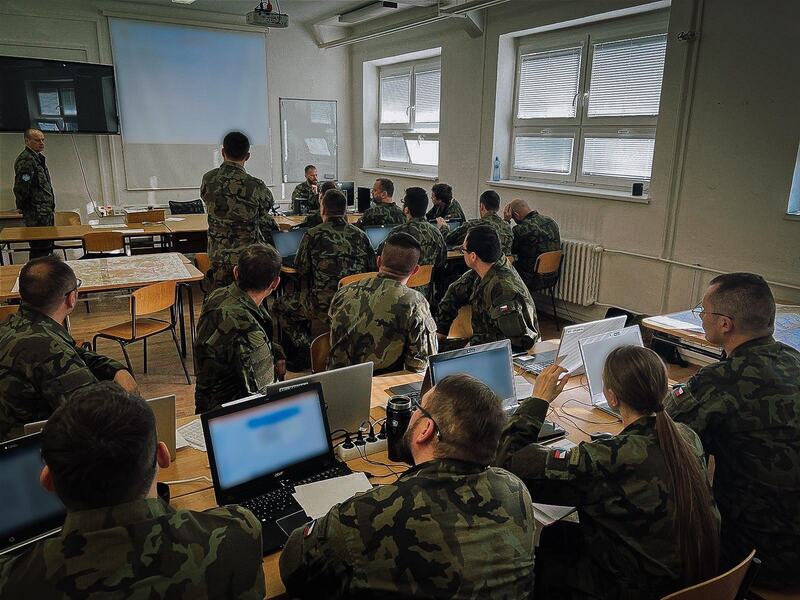
The best example of strategic communication from the Ukrainian battlefield is President Zelensky's famous video from the first hours of the war. It was filmed at night on a mobile phone in the middle of bombed-out Kiev with a clear objective - to convince the Ukrainian public that there is no danger of a repeat of 2014, quite the opposite. Not only did the country's president not fly out of the country into exile, but the slogan 'I want ammunition, not takeaway' became the embodiment of the Ukrainians' resistance to the Russian invasion.
Information support
For each of the five combat domains, a force that wants to operate successfully in it must have the capability to conduct defence, attack, and reconnaissance. If it does not have any of these, it is better not to operate in that combat domain at all. Of course, not only the Army of the Czech Republic, but also the Information and Cyber Forces are aware of this. One of the roles of the Cyber and Information Operations Group is to maintain an intelligence overview of designated areas of interest, particularly using open source and social media intelligence. The Information Support Centre, which provides this capability, is the part of the Service that, by the nature of its operations, maintains an overview of areas of interest on a 24/7 shift basis.
If anyone doubted the capabilities of open source and social media intelligence, the Russian-Ukrainian war in particular must have been an eye-opener. It is a war fought live, with civilians and soldiers indiscriminately, often unwittingly, acting as war cameramen and photographers - all with the help of mobile phones and social media. On top of this, within these networks, there are high-quality data aggregators, often using machine learning, allowing battlefield casualty assessments to be made as easily as ever. Of course, all of these capabilities have a flip side, where a soldier unwittingly sharing location data on a social network can spell disaster for his own unit.
Product creation
All of the aforementioned capabilities would be useless if they weren't backed by quality product creation. These need to be tailored not only to the client, but also created in a timely manner and often with the need to handle sensitive information. The Cyber Force and Information Operations Group therefore provides these capabilities in-house, through its own support group. The latter has the capability not only to photograph and film products, including concept development, but also to ensure their subsequent post-production. It is thus able to support not only other parts of the unit, whether audiovisual or printed products, but also other parts of the army or the Ministry of Defence.
Within the Ukrainian theatre of war, we can observe extremely creative work by all components of the Ukrainian Armed Forces, which is obviously coordinated centrally, but if a particular execution or concept proves successful with the target group, this concept is subsequently implemented by other components of the Armed Forces. The involvement of the soldiers themselves is obviously not only tolerated but appreciated, as the immediacy and extensive coverage are priceless. The specific tenor and manner of deployment on specific communication channels is then, of course, in the hands of the higher echelons.
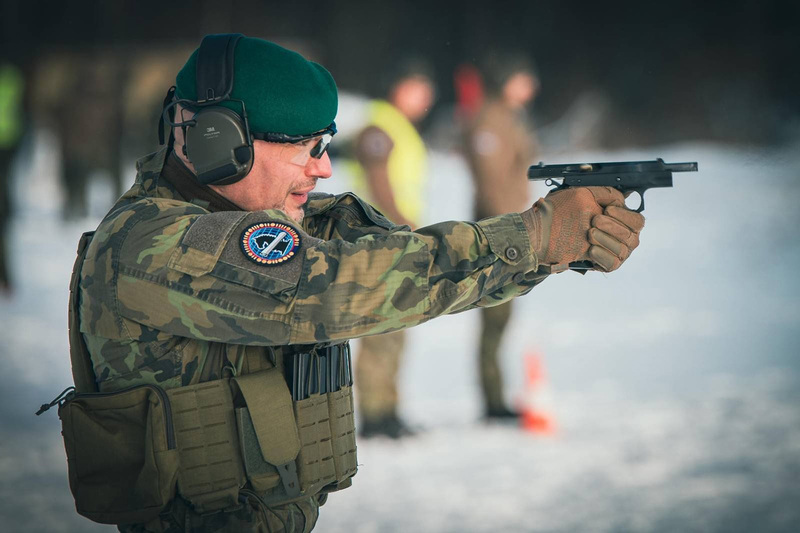
Fighting in cyberspace
Combat in cyberspace has long been an underappreciated capability. However, as the armed forces and society become increasingly digital, the vulnerability and opportunity for the attacker grows alongside the benefits. Therefore, it is essential that the Czech state possesses all three capabilities required to conduct cyber warfare - defence, offence and reconnaissance. Thanks also to the components of the Information and Cyber Forces, our Republic is ready to face the reality of cyber warfare.
Although it might seem that there is no place for cyber warfare on the Ukrainian battlefield, and that everything is decided by artillery duels, drones, and mechanized troop raids, the opposite is true. Both warring sides have carried out successful attacks on the enemy's financial institutions, and it is reasonable to assume that a hacker group at least sympathetic to the Ukrainian state was behind the disabling of the control system of the Belarusian railway. The repeated "hijacking" of television broadcasts in temporarily occupied Crimea, when the President of Ukraine's speech was broadcast to its residents instead of the usual evening broadcast, has probably escaped few people's notice.
The future of the Cyber Forces and Information Operations Group
Although in today's dynamically changing security situation it is very difficult to predict the development of events in the longer term, some trends are nonetheless evident.
The first is the increasing digitalisation of all countries in the world, including the growing importance of artificial intelligence. Hand in hand with this is the speed with which information, but also misinformation, is being disseminated via social networks, which for some groups have long since replaced traditional media. All of this is necessarily reflected in the way wars are fought, where cognitive warfare, i.e. the battle for the enemy's will in the broadest sense, especially in Russian doctrinal thinking, is never-ending.
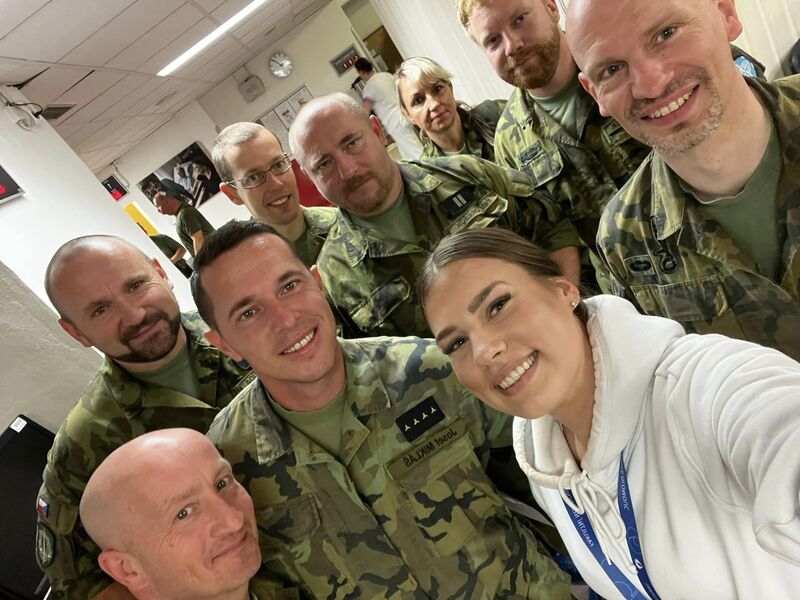
The second is the rapidly growing importance of information and cyber forces, but also the extent of their responsibilities. Hand in hand with this is the increase in the number of personnel providing these operational capabilities. One figure for all - the Cyber and Information Operations Group has more than doubled in size in the short time it has been in existence and this trend will continue. One of the prerequisites for this to continue is attractiveness to future soldiers.
The combination of the attractive city of Olomouc in the heart of Moravia, together with the specific job description, seems to be the key to further growth. This is because, unlike other branches of the force, the set of knowledge and skills that are in demand for the service are transferable not only inwards but also outwards. Indeed, the cyber force group is looking for candidates who have the aptitude to act as marketing managers, negotiators, analysts, social media managers, copywriters, videographers, photographers, editors and much more. These talents that brought them into the force can then easily be applied after their eventual retirement to senior civilian sector positions.
Overall, the current state of the Information and Cyber Forces can be described by quoting the founder of the British Airborne Forces, General Frederick Browning: 'Paratroopers have no past, but they will have a future all the more glorious.'
Where paratroopers stood in the early 1940s, members of the Information and Cyber Forces stand today.












